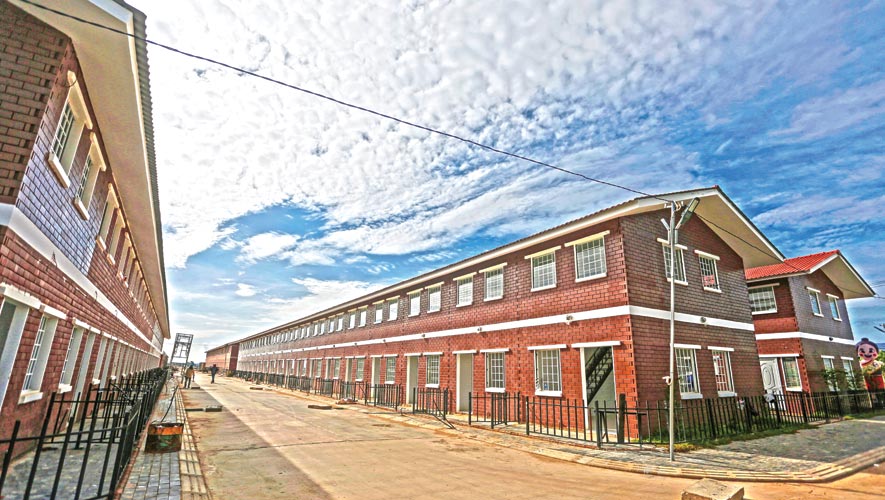Cambodia is urbanising. Its population is estimated to rise to 18.9 million by 2030, with 29 percent of people living in cities, according to the World Urbanisation Prospects 2018. But the gathering crowd of urban migrants could lead to a lack of residential space in urban areas, especially in Phnom Penh.
For the latest Cambodian Business news, visit Khmer Times Business
In 2017, Chea Sophara, Minister of Land Management, Urban Planning and Construction, claimed at a National Housing Forum that these migrations will require an additional 500,000 to one million housing units.
In 2014, the Cambodian government adopted a National Housing Policy and established the General Department of Housing, which sits under Sophara’s ministry.
Three years later, the government adopted the Affordable Housing Program to help reduce poverty.However, access to amenities, services and the workplace should be taken into account, with the most pressing issue being distance from home to workplace.
The affordable housing delivery strategy was implemented in the form of a public-private partnership model.
Tax and regulation incentives encouraged the first private investment in affordable housing in Kandal province, about 18 kilometers from central Phnom Penh. The site is a considerable distance from areas where poorer residents, like garment factory employees, typically work, such as Mean Chey, Porsen Chey, Dongkao and Chroyongva districts of Phnom Penh.
The question is, why would these residents buy a home so far from their workplace? And if the government has no plans to move more garment factories to Kandal, why would it encourage affordable housing to be developed there, given that this does not encourage labour activity or productivity?
Location is a problem for numerous affordable housing developments. Worldbridge Home is developing a private affordable housing development called Serei Mongkol Satellite City in Kandal’s Saang district. But many garment factories are located in Phnom Penh’s Chakangre Leur district, a14-kilometre commute away.
My own analysis suggests that it costs workers $30 per month; 16.5 percent of minimum wage of $182, to make this commute, based on the cost of petrol needed to drive there everyday. This doesn’t even take into consideration the time wasted, where 30 to 50 minutes is long, given that traffic congestion is getting worse.
The distance plus traffic, would make it really difficult for garment workers and civil servants to live in the affordable housing development. Yet, affordable housing continue to go up far from where people work, like in the case of Arakawa Residence, a lot of 2,000 affordable housing units that are being built in Phnom Penh’s Sen Sok district. It is 13 kilometres from the Phnom Penh Special Economic Zone (PPSEZ), home to 88 companies which employ 17,000 people, many of whom are low-skilled workers.
For affordable housing to be effective in helping reduce poverty, it must be located more centrally.
Minebea Cambodia, a Japanese firm located in the PPSEZ, provides free housing to its workers in a location close to healthcare centres, markets and schools. The homes are even walking distance from the workplace.
It is the skyrocketing land prices in Phnom Penh (ranging between $2,200 and $12,000 per square metre) that has caused affordable housing projects to be pushed to the outskirts of the city.
However, we should consider the effects of distant housing locations on factory workers’ savings and access to amenities, public goods and services.
Where households are located near livelihood opportunities, their prospects for economic success are significantly enhanced.
If places of work are separated from places of residence by distance or by an inefficient transportation system, households may spend a disproportionate amount of time and money on travel, and poverty levels will exacerbate.
Social housing, which is a cheap public rental housing with a long tenancy, could be developed by the government in four central districts of Phnom Penh, such as Chamkarmorn, Daun Penh, 7 Makara, and Toul Kork. These four main khans are brimming with private enterprises, and government institutions.
In doing so, the government can allocate national budget with financial and technical support, and cooperation with civil society organisations, development partners, and private sector to develop on vacant or underutilised public lands.
Furthermore, affordable housing could also be developed in more semi-urban districts, which have available land at cheaper prices, and are closer to the factories where the targeted residents work.
Seng Panha is a Young Research Fellow of Future Forum, an independent Phnom Penh-based public policy think tank. He is currently conducting a research project on affordable housing policy for urban poor




